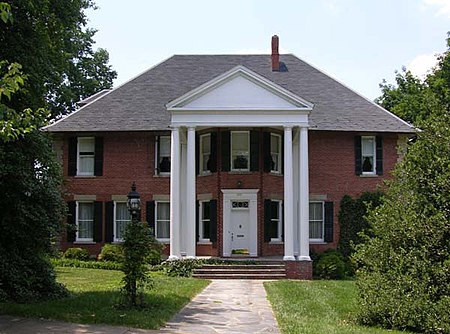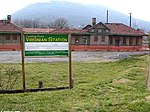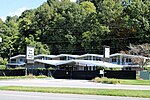Boxley–Sprinkle House
Colonial Revival architecture in VirginiaHouses completed in 1907Houses in Roanoke, VirginiaHouses on the National Register of Historic Places in VirginiaNational Register of Historic Places in Roanoke, Virginia ... and 1 more
Shenandoah Valley, Virginia Registered Historic Place stubs

Boxley–Sprinkle House is a historic home located at Roanoke, Virginia. It was built in 1907, and is a two-story, five-bay, Colonial Revival style brick dwelling. It has a central projecting bay, full height entrance portico and hipped roof. The house was originally constructed in the Victorian style, with the entrance facing 26th Street (then 5th Avenue) with a corner turret, projecting polygonal bays and a wraparound porch. In the 1940s, the house was redesigned in the Colonial Revival style and the entrance was changed to face Crystal Spring Avenue.It was listed on the National Register of Historic Places in 2004.
Excerpt from the Wikipedia article Boxley–Sprinkle House (License: CC BY-SA 3.0, Authors, Images).Boxley–Sprinkle House
26th Street Southwest, Roanoke
Geographical coordinates (GPS) Address Nearby Places Show on map
Geographical coordinates (GPS)
| Latitude | Longitude |
|---|---|
| N 37.244722222222 ° | E -79.950555555556 ° |
Address
26th Street Southwest 268
24014 Roanoke
Virginia, United States
Open on Google Maps







